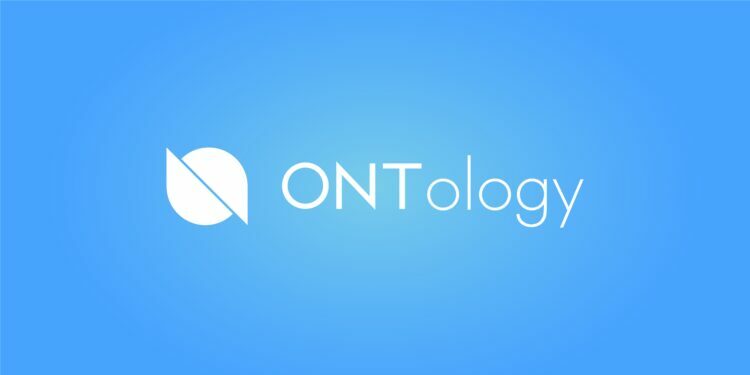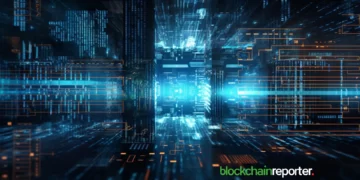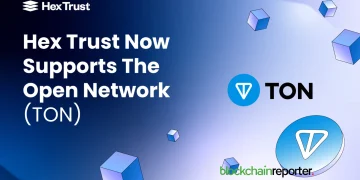Staking cryptocurrencies has become an increasingly popular way for investors to earn passive income while supporting the networks they believe in. Ontology is one such blockchain platform that allows its users to participate in staking Ontology (ONT) tokens and earn rewards in the form of Ontology Gas (ONG) tokens. In this ultimate Ontology staking guide, we will explore how to stake ONT, select the right node, comprehend the fee sharing ratio, claim staking rewards, and more.
What is Ontology?
Operating as a high-speed, cost-effective public blockchain, Ontology is dedicated to introducing decentralized identity and data solutions to Web3. The primary objective is to enhance privacy, transparency, and trust within the ecosystem. Users and enterprises have the freedom to construct tailored blockchain-based solutions that meet their specific requirements while ensuring adherence to regulatory standards.
Ontology’s integration of the Ethereum Virtual Machine (EVM) ensures seamless compatibility with Ethereum and paves the way for the Ontology Multi-Virtual Machine, facilitating further chain interoperability. Ontology aims to instill trust, privacy, and security in Web3 through decentralized identity and data solutions. The project is creating the infrastructure to enable reliable access to Web3, offering individuals and enterprises regulatory-compliant digital identity solutions.
The ONT and ONG Tokens
ONT and ONG tokens are fundamental to the functioning of the Ontology network, empowering the implementation of self-sovereign, decentralized identity solutions in Web3. The platform operates on a dual-token model, fostering scalability and enabling high-volume, low-cost transactions at rapid speeds. Both ONT and ONG tokens play crucial roles in supporting the ongoing operations of the Ontology public blockchain.
The ONT token serves as the primary medium for storing and transferring value within the Ontology network. When ONT token holders delegate their stake to a Triones node, they grant the node operator the authority to participate in governance proposals and voting on their behalf. Meanwhile, transactions and fees on the Ontology network are facilitated using the ONG token. Smart contract deployment, for instance, requires ONG tokens. By utilizing ONG, the network maintains predictable transaction costs, creating a user-friendly environment for developers and users alike.
Through staking ONT and earning ONG rewards, users actively contribute to the network’s security and stability. The ONTO Wallet provides a convenient platform for users to store, exchange, and transact with both ONT and ONG tokens. ONTO Wallet serves as a comprehensive cross-chain identity and asset management solution for Web3 users, available as a mobile app and a Chrome extension for PCs.
How Does Ontology Staking Work?
In this section, we will explore the intricacies of Ontology staking, including how to stake ONT, choose the right node, understand the fee sharing ratio, and claim staking rewards. Let’s dive into the world of Ontology staking and unlock its potential for earning passive income while supporting the network’s growth.
1. Staking Rewards
Staking ONT tokens on the Ontology network allows participants to earn rewards in the form of ONG. The rewards are generated from the transaction fees collected during consensus rounds, and the release of ONG tokens is based on a predetermined release model.
2. Fee Sharing Ratio
The fee sharing ratio is a crucial factor in determining how staking rewards are distributed between the node operator and the stakers. For example, a fee sharing ratio of 10%/90% implies that 10% of the node’s rewards are shared with the stakers, while the remaining 90% of the user-staked token rewards are distributed among the stakers.
3. Choosing a Node
Ontology network has two types of nodes: consensus nodes and candidate nodes. Consensus nodes are well-established and play a critical role in validating transactions and maintaining the network. On the other hand, candidate nodes are relatively new and often offer higher rewards and shorter lock periods, making them an attractive choice for most stakers.
When selecting a node, it is essential to consider factors such as the node’s reliability, performance, and reputation within the Ontology community. Additionally, users should evaluate the fee sharing ratio and lock-up periods offered by different nodes to maximize their staking rewards.
4. How to Stake
To participate in staking ONT tokens, users need to use an official Ontology wallet like ONTO or OWallet. These wallets provide a user-friendly interface for managing staking activities and claiming rewards. Additionally, users must have a certain amount of ONG tokens to cover gas fees associated with staking and other transactions on the Ontology network.
Once you have the required tokens and wallet, you can initiate the staking process by locking up your ONT tokens. It’s essential to understand that staked ONT tokens will remain locked until the end of the current consensus round (or the next round, depending on the node type) if you decide to cancel the staking.
5. Canceling Staking
Users can cancel their staked ONT tokens at any time, but the tokens will remain locked until the end of the ongoing consensus round (or the next round, depending on the node type). This lock-up period is necessary to ensure the stability and security of the network, as sudden and frequent staking changes could destabilize the system.
6. Getting Your Stake Back
After canceling your staking, the ONT tokens will be unlocked and ready to be claimed once the current consensus round (or the next round, depending on the node type) concludes. This means that there might be a short waiting period before the tokens become available for further action.
7. Claiming Staking Rewards
Staking rewards in the form of ONG tokens can be claimed after each consensus round ends. However, users have the flexibility to accumulate rewards over time and claim them periodically rather than after every round. This approach can be beneficial, especially for those looking to maximize their rewards and reduce transaction fees associated with claiming after every round.
8. Utilizing ONG Tokens
Once you have earned ONG tokens as staking rewards, there are several options for utilizing them. Holders can choose to keep their ONG tokens as a store of value, sell them for ONT to compound their staking position and earn more rewards, swap them for other tokens to diversify their portfolio, or provide liquidity on platforms like Wing Finance to earn additional rewards.
Final Thoughts
Staking ONT on the Ontology network is not only a profitable venture but also a way to contribute to the network’s security and growth. By participating in staking, users actively support the consensus process and help maintain the overall stability and decentralization of the Ontology blockchain.
In conclusion, Ontology staking offers a great opportunity for investors and cryptocurrency enthusiasts to earn passive income while actively contributing to the development of the Ontology ecosystem. By following the guidelines outlined in this ultimate staking guide, users can make informed decisions, choose the right node, and maximize their staking rewards effectively. Remember to do thorough research, stay updated with the latest developments in the Ontology network, and enjoy the staking journey. Happy staking!























